Week #21, Oct 5 2017
- On: October 04, 2017
 0
0
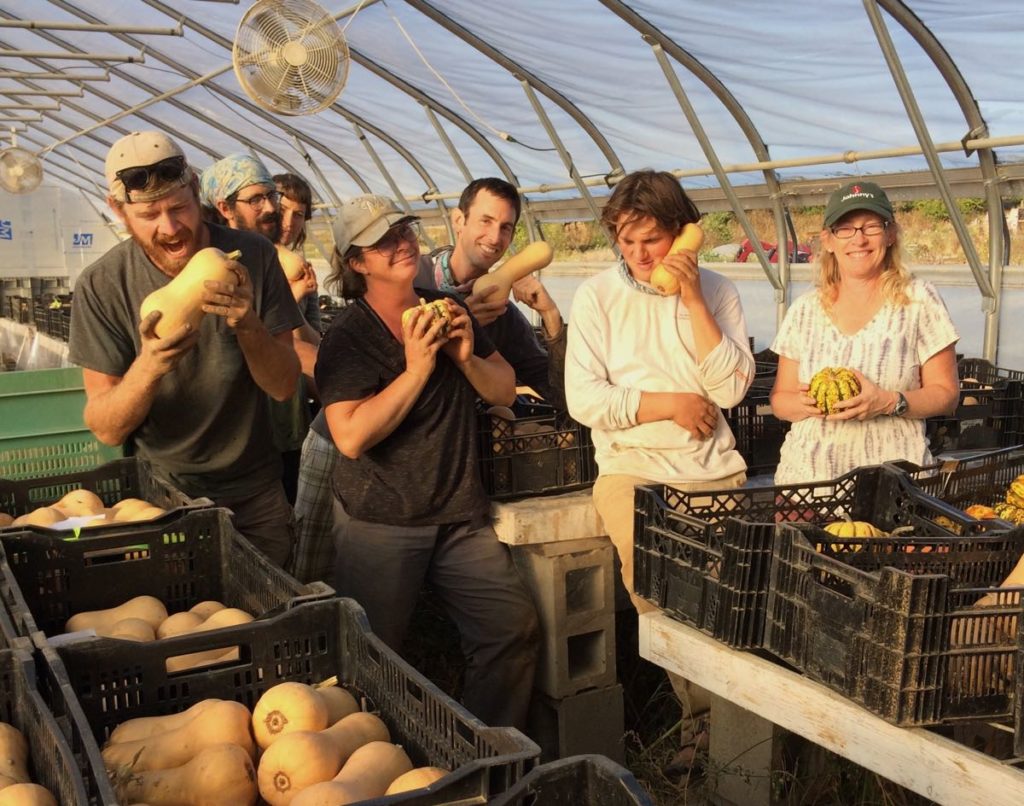
From left, Billy (ready for a snack), Smitty, Charlotte, Kristin (with a favorite squash), Jon, Jory (taking a call during our photo shoot!) and me (playing straight man). MIA Karen, Maggie & Simone.
Our winter squash crew gets a big thank you from me. Together, we clipped and picked up many, many squash over the last few weeks. It’s an exacting job to judge ripeness of the different varieties. Also, we notice that squash get heavier after you pick up a few hundred. Special thanks to Kristin, who stuck with me through every harvest this year, and to Jon and Karen who have helped with squash harvests for many years. Each crop needs judgement which makes it so valuable to work with the same crew each year. This year’s harvests happened during dry weather, perfect for us and perfect for the squash. Beth
Sweet potato harvest
Our main sweet potato harvest happened this week. (The sweet potatoes in this week’s box are from a smaller harvest a few weeks ago.) This week’s harvest was perfect. You can’t dig the sweets out of dry ground – they damage too easily. Steve irrigated the field a few days ago so the ground would be moist. Last night’s rain helped. Soil moisture was perfect and the sweet potatoes popped right out of the ground. So satisfying.
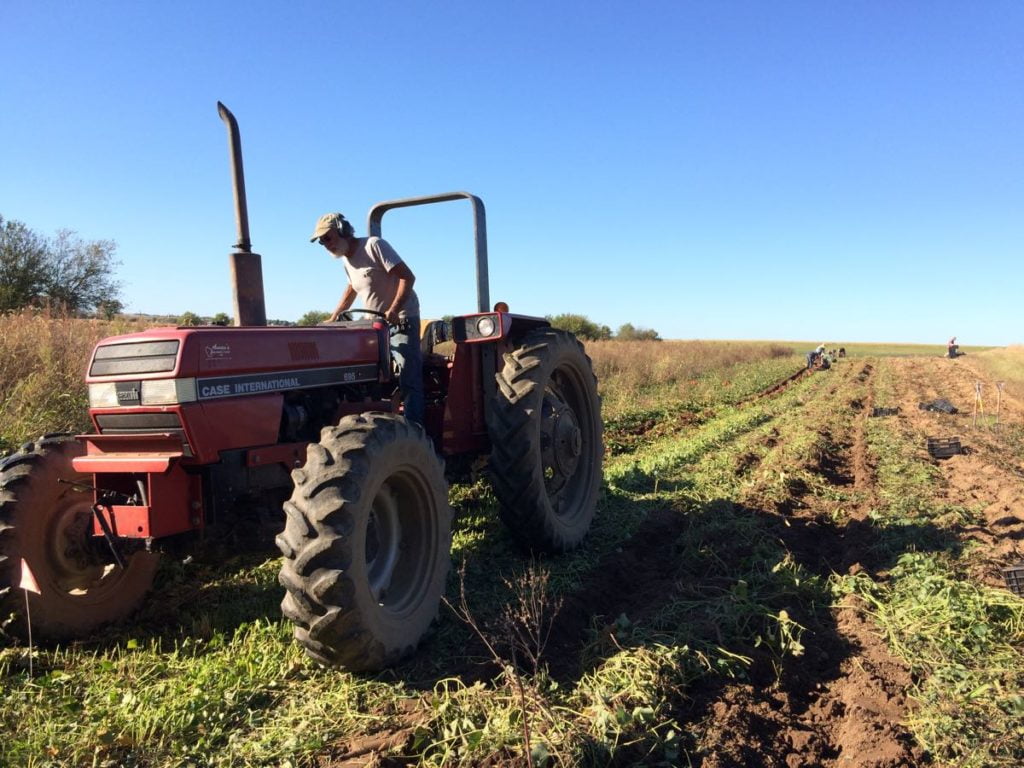
Steve undercuts the roots with the tractor and digger.
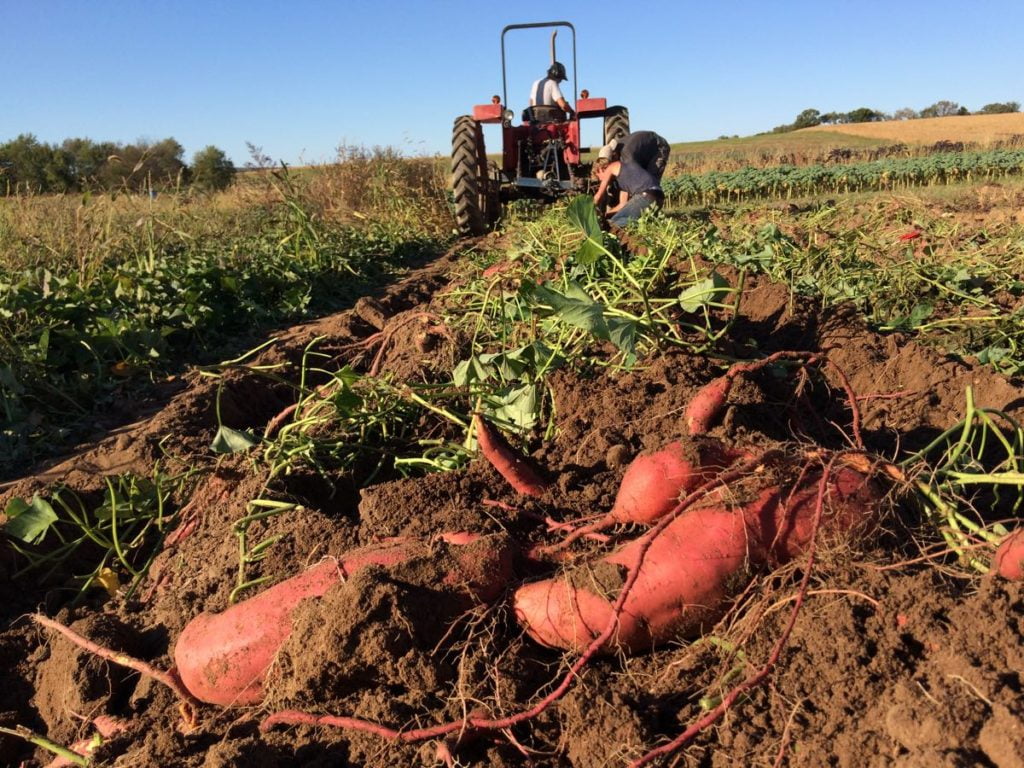
If conditions are good, the sweet potatoes end up on the surface.
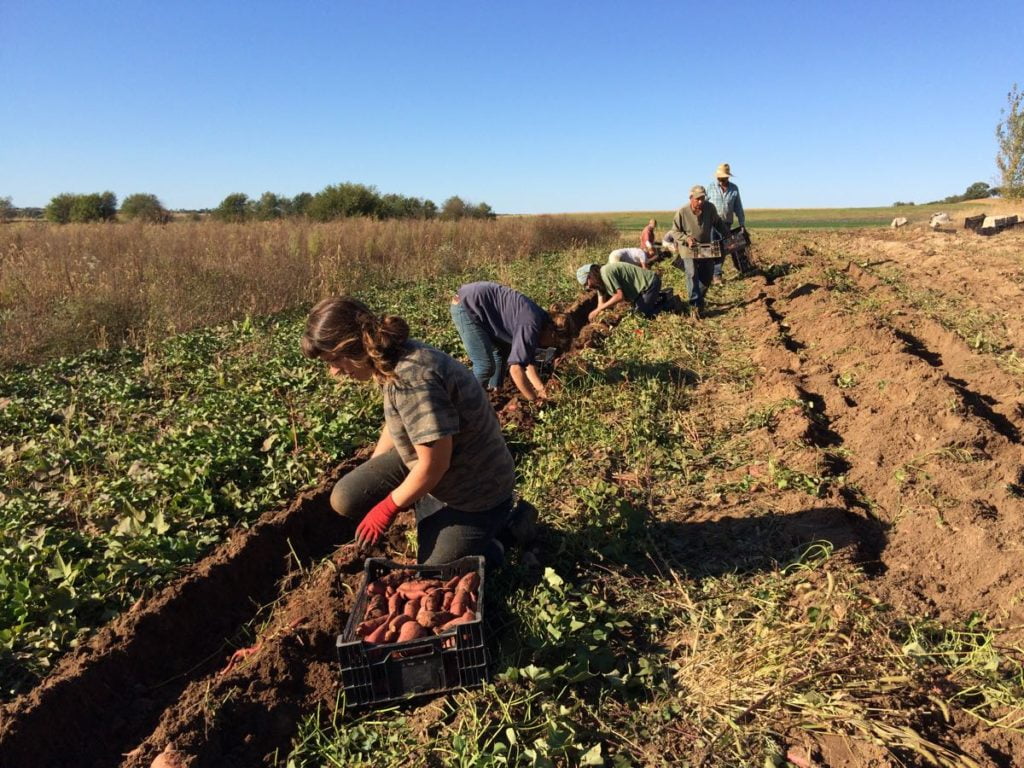
We pick them up by hand. It helps to gather a mob for this step. This crop is also heavy.
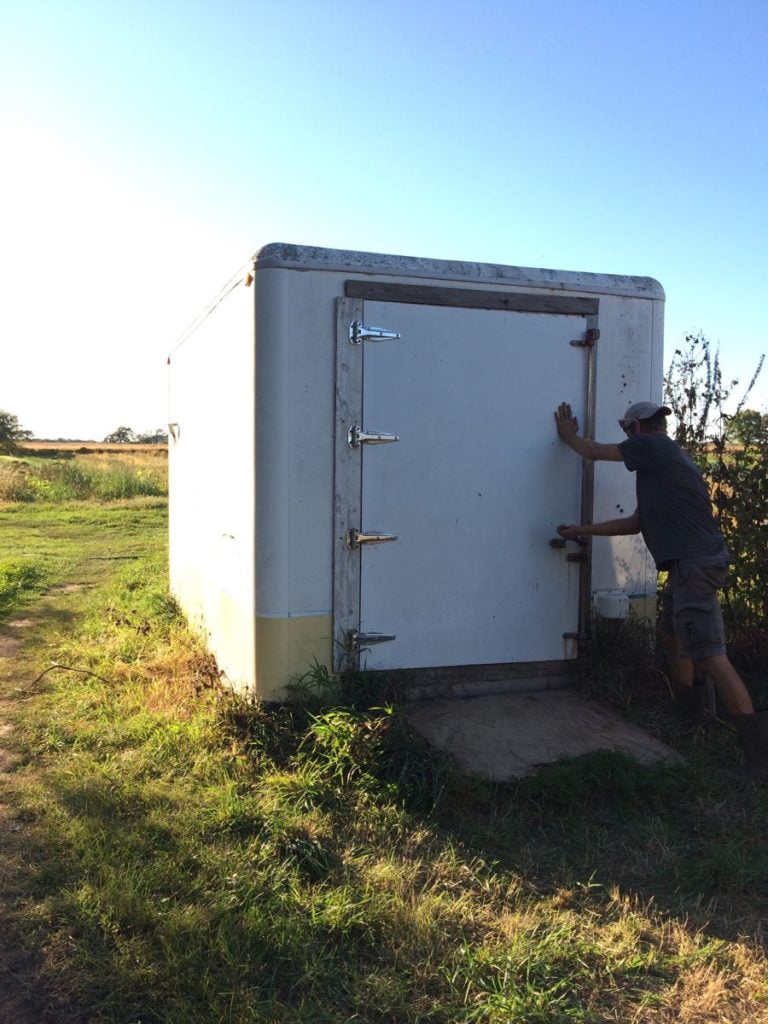
We put them in an insulated truck box and crank up the heat to 86 degrees with high humidity for a few days. That starts the curing process so the tubers sweeten and the skins toughen. Curing helps heal any dings and scrapes that happen during harvest.
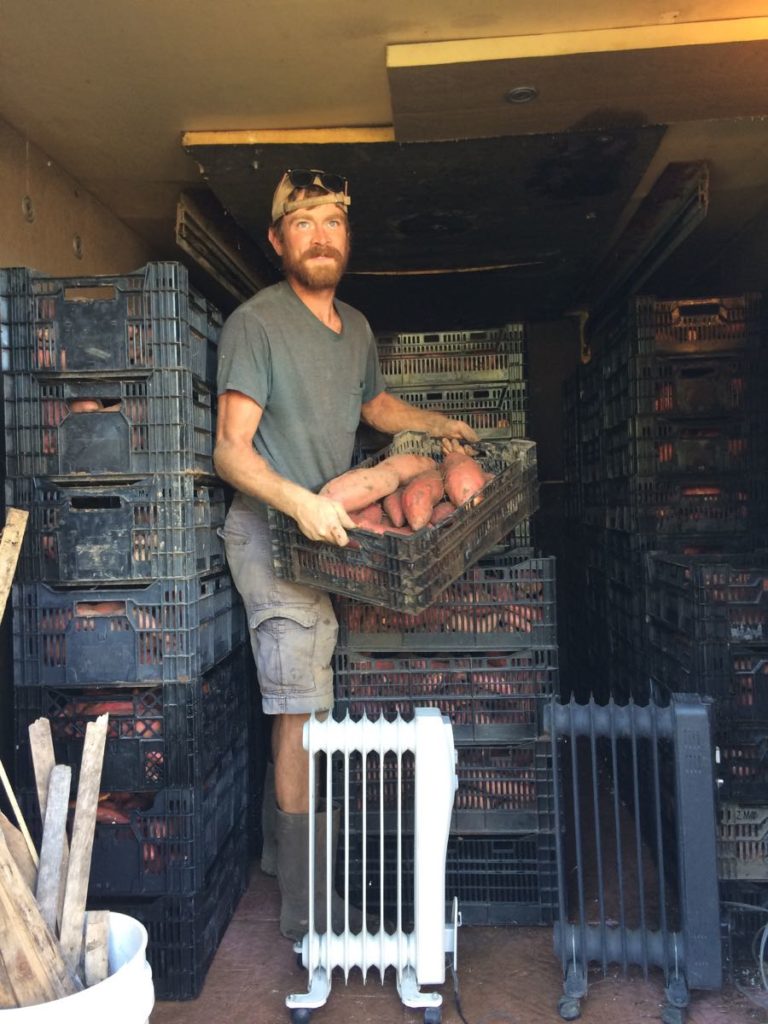
Billy (above), Kerry and Jory stacked the sweet potatoes in rows for good air movement.
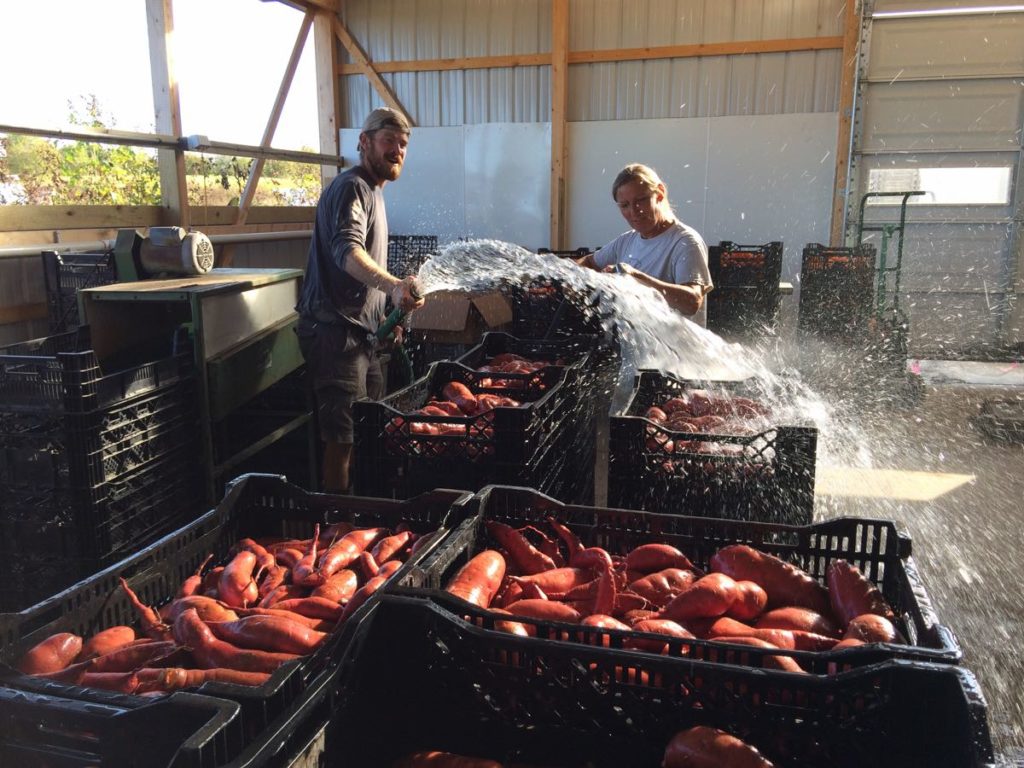
Wetting down this week’s sweet potatoes before washing. We dug these ones about three weeks ago.
Veggie List and Veggie Notes
October 5/6, 2o17; week #21, purple EOW, sun SMP
Green cabbage
Sweet potatoes, ~2 lb
Romano beans, 1.9 lb
Edamame soybeans, 1 bundle
Red mizuna, 1 bunch
Winter squash, 1 or 2
Red onion
Slicing tomatoes, a few
Bell peppers, 2
Some sites get broccoli.
Some sites get cauliflower.
Next week’s box will probably contain winter squash, broccoli or cauliflower, kale or collards, peppers, carrots, scallions and more.
‘Beauregard’ sweet potatoes – Here are a few things we’ve learned about sweet potatoes:
– For best flavor, cook your sweet potatoes so they brown and caramelize. We have a simple, favorite way to roast sweet potatoes. We used to prepare sweet potato fries in the oven. Now we just quarter the potatoes, rub with olive oil, dust with salt and place cut-side-down on a cookie sheet. Roast in a 450 F oven without turning until soft. The flavors will caramelize (like sweet potato fries) but preparation is simpler and the cooking time less exacting. Slender sweet potato fries go from undercooked to overcooked in the blink of an eye. Larger slices are less exacting, and therefore are easier. Small sweet potatoes can be cut just in half. Jumbos will need to be chopped into pieces. Otherwise, they will take a long time to cook.
– Store your sweet potatoes at room temperature. They suffer chilling injury below 50 F.
– The sweet potatoes we grow require slightly longer cooking than ones from the supermarket, perhaps because they contain higher moisture so soon after harvest.
– Sweet potatoes are good at any size. We have cooked everything from tiny to jumbo and consistently find that all sizes taste good.
Romano beans – Steve says these are ‘meaty’ this week. They aren’t overripe. They are just big, perfect for braising recipes.
Edamame soybeans (bundle of green stems with pods attached) – These edible soybeans are a treat. Pull the pods from the stem and wash well. It helps to submerge the pods and rub them together. Boil in water until the pods have split and the beans are quite tender. Season with salt and pop the beans out of the pods into your mouth. This Japanese specialty is becoming more and more popular in the USA.
Storage: Remove the pods from the stems promptly and refrigerate.
Mizuna – Mizuna is similar to mustard greens but with the pepperiness of arugula. Good raw in salads or cooked in any recipe that calls for mustard greens. Cooking tames the pepperiness. Use the leaves and younger, more tender stems. Discard older stems as they can be tough.
Slicing tomatoes – I fibbed last week. These are the final tomatoes of the season. They aren’t as flavorful as summer tomatoes but are surprisingly good for this time of year. Thank the dry weather. You should refrigerate these tomatoes because they are not going to store well at room temperature. Eat soon.
Winter squash – You’ll get one of the types in the photo. They are ready to eat, and should be eaten within two weeks. Store your squash at room temperature on your kitchen counter where you can keep an eye on it.
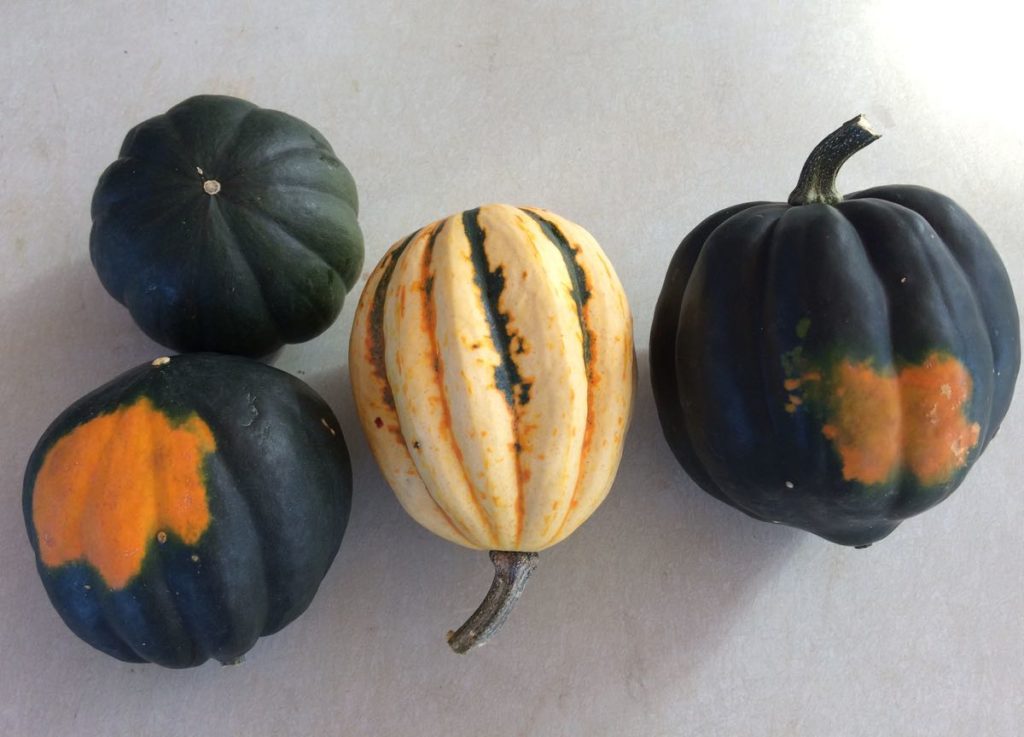
This week’s winter squash. Each site gets one type. From left, Sugar Bush acorn, Jester, TipTop acorn.
RECIPE LOG
Visit our Recipe Log, a list of all our 2017 recipes. Pat and Lauren have given us lots of broccoli and bean recipes already this year. Check out 9/21/17 for a few winter squash recipes.
LOCAL THYME RECIPES
Comforting Classics
Braised Mustard Greens
Minestrone with Peppers, Tomatoes, Cabbage and Romano Beans
Risotto with Braised Green Cabbage
Sweet Potato Puree
Outside the Box Recipes
Mizuna & Turkey Salad
Braised Romano Bean with Feta and Lemon Pepper
Slow Roasted Cabbage Chips
Chipotle Chicken and Sweet Potato Burrito
Quick and Easy Meal
Sweet Potato Posole with Black Beans



